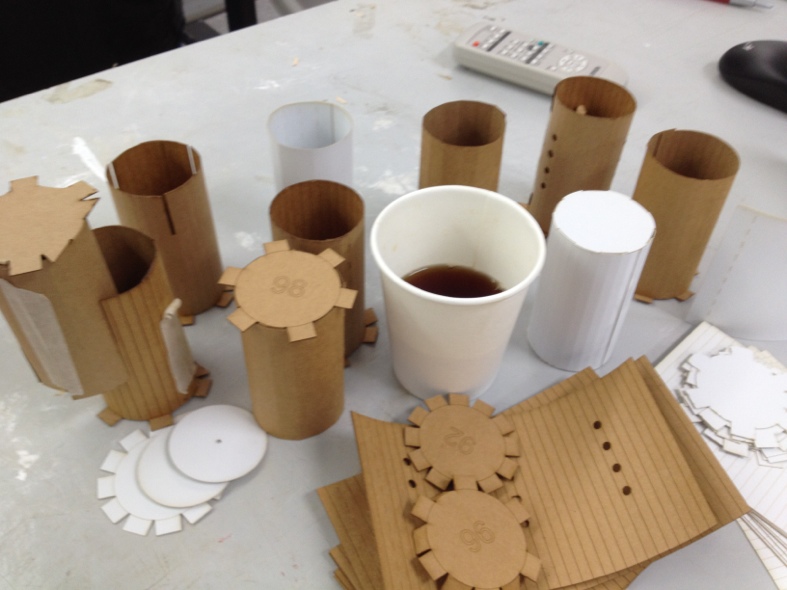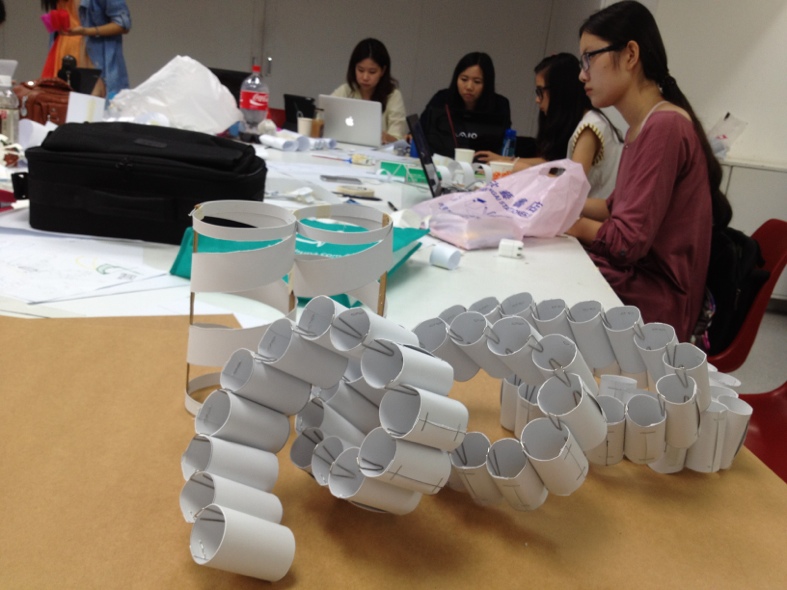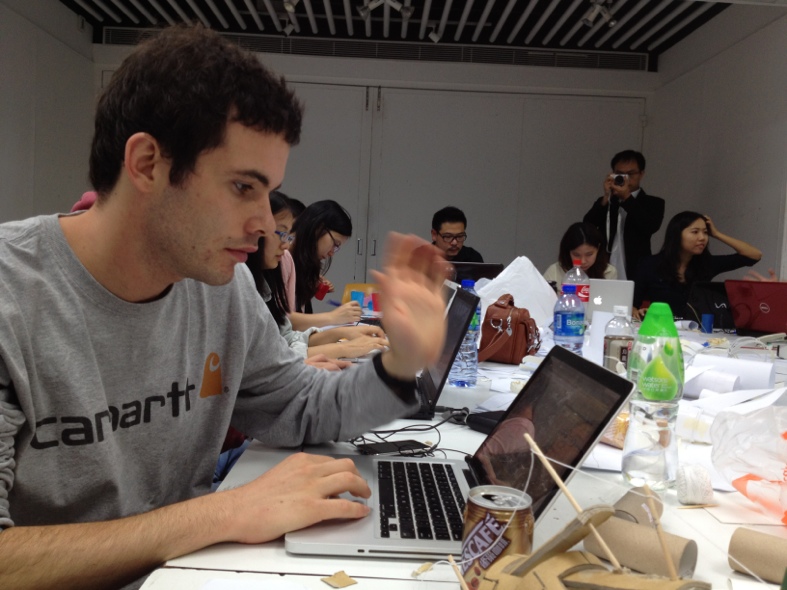This year we introduced a very specific design problem at the very beginning of the workshop, hoping that students would have more time to brew a design, we have a whole bunch of blue plastic barrels that are collected from the industry as waste material. We are using these 460mm diameter, 860mm tall barrels as building blocks for the students to figure out how they could connect them together and make a pavilion.
Building Blocks
Building block exercises appears to be one of the most prevalent choice of theme for digital geometry workshops like ours. Reinventing some nonsense materials to act as building blocks, at first seems to be an absurd problem for an architect, but that does not make it an uninteresting thing to do.
The playful image of Greg Lynn’s plastic toy assembly hides the complicated computation behinds the scene, it involves precise digitation of found geometry, geometrical intersection and the translation of 3D curves to multi axis robotic arm NC tool paths. Even an experienced digital geometer would not disagree that the process is difficult.

I think it is similar when the ancient Romans took a piece of brick and put them into arches. Before that bricks are mainly used to stack up walls, their reinvention for bricks allows the material to perform differently - spanning a door opening without a lintel. The Romans are lucky because they didn’t have to reshape the bricks to make it an arch, the fan-shape gap between the bricks can be effectively filled up with mortar. By repeating the arch linearly, they created a barrel vault, which is a good way to make a solid roof. The reinvention of brick did not just stop there, in the later Roman era, they figured out how to make Groin Vaults and then later Ribbed Vaults – That reduced the point of support from two lines (in a barrel vault) to four corners (Groin Vault), creating a more performative space for buildings. (I tends to think that) later invention of complicated decorative ribbed vaults,  are manifestations of the builders/architects understanding on bricks, particularly the structural performance and aggregation possibility of the material.

The achievement of Greg in this modern time re-initiated this adventure. In a way founded a new fetish of treating every found object as bricks, aggregating them to pavilions. If bricks you choose don’t build an structure well, no problem, programmers and modelers can now step in and gracefully exploit the digital tools and CNC machinery we have, to make them conform in front of you.




